Jewels of Bohemia - May 23 - June 6, 2018
(Czech Republic, Slovakia, Hungary)
Part Two, Slovakia
Page Five -
Bratislava
As with the other Central Europe countries, the history of Slovakia is
complex,
with earlier ethnic
and cultural difficulties continuing today. Celts,
Romans,
Barbarian tribes, Huns, Slavs, Hungarians, and eventually Germans
and the Soviet Union ruled the region.
The population today reflects that
diversity, as it struggles to find a common national identity.
In 1918, Slovakia and the regions of Bohemia, Moravia, Czech Siles,
and Carpathian Ruthenia formed a common state: Czechoslovakia (1918-39).
It provided what were at the time rather extensive rights to its minorities and
was the only democracy in this part of Europe between WWI and WWII.
A separate Slovak Republic (1939-45) existed in WWII as a client state of
Nazi Germany. In 1945, Czechoslovakia was re-established under
Communist rule and became a Soviet Union satellite state. In 1989,
the Velvet Revolution ended Communist rule in Czechoslovakia. Slovakia
became an independent state in January 1993 after the peaceful dissolution
of Czechoslovakia, sometimes called the Velvet Divorce.
Slovakia is a landlocked country bordered by Poland to the north, Ukraine
to the east, the Czech Republic to the west, Hungary to the south, and
Austria to the southwest. It has a market economy with a comprehensive
social security system. Its citizens are provided with universal health
care and free education. It joined the European Union in 2004 and
adopted the Euro in 2009. The Carpathian Mountains dominate the
topography with lowland areas in the southern region. Its population
is about 5.5 million. Its religious affiliations are: Roman Catholic 62%,
Protestant 8.2%, Greek Catholic 3.8%, other 12.5%, none 13.4%.
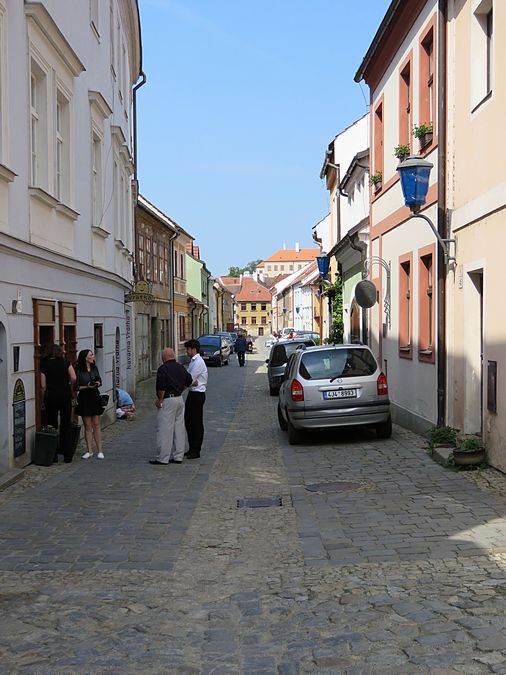
On our way to Bratislava, capital of Slovakia, we stopped
in Trebic in
the Moravian part of the Czech Republic. We toured
the Jewish Quarter, part of which
is shown here.
All original Jewish inhabitants were deported and most were
murdered in concentration
camps by Nazis during World War II.
Only ten of them came back after the war. Therefore,
many buildings don't serve their original purpose
and the
houses are now owned by people of non-Jewish faith.
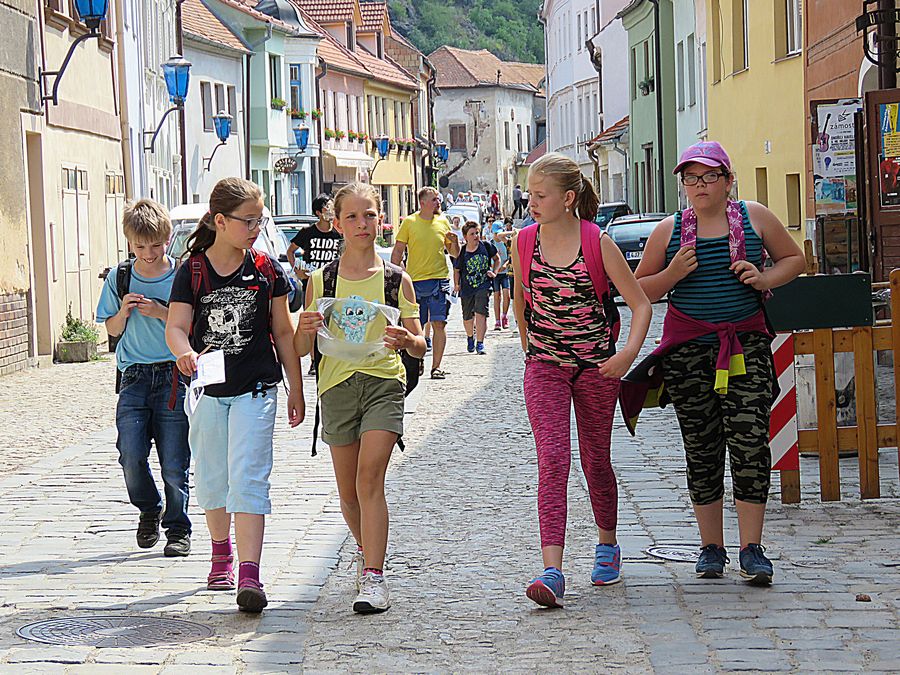
School kids in the former Jewish ghetto in Trebic
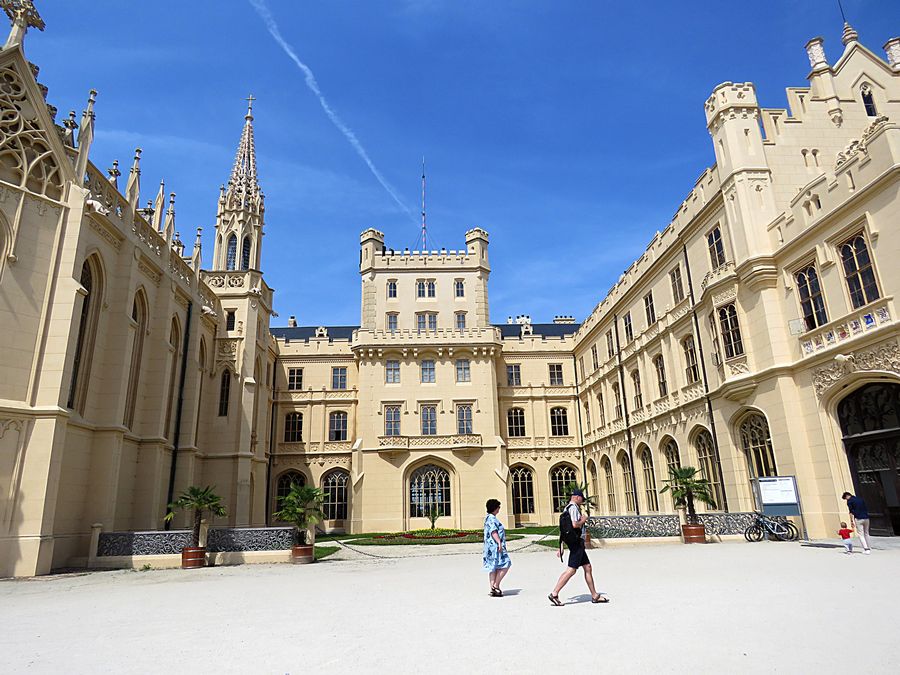
Lednice Castle - The palace of Lednice began as a Renaissance villa.
In the 17th century, it
became a summer residence of the ruling
Princes of Liechtenstein. The estate house exhibited
rural luxury on the grandest scale.
In 1846–58 it was extensively rebuilt in a Neo-Gothic style.
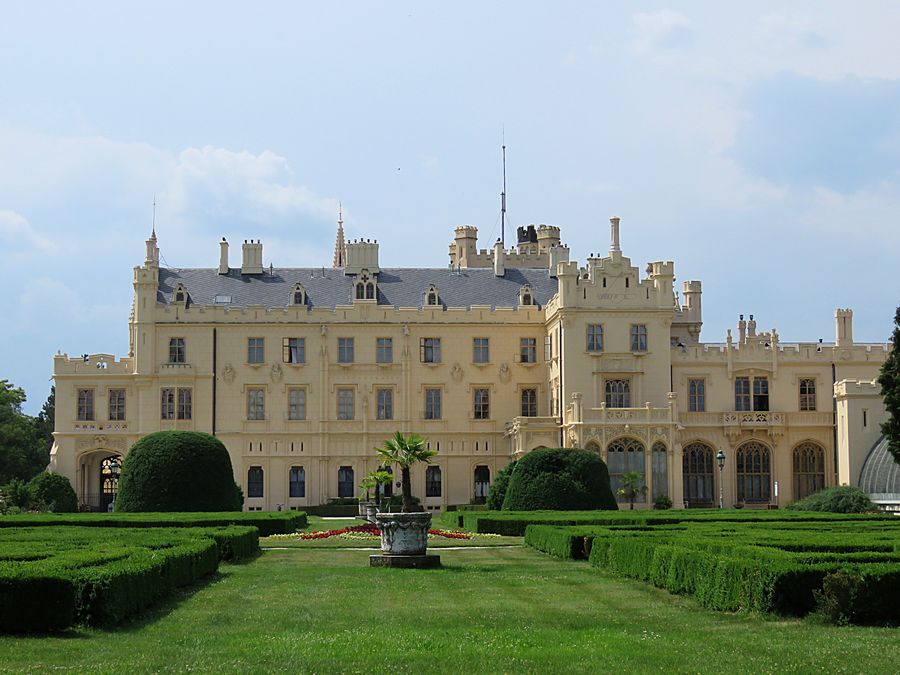
Lednice Castle in the south Moravian city of Lednice, Czech Republic.
Here is a view
of part of the Castle from the extensive gardens.
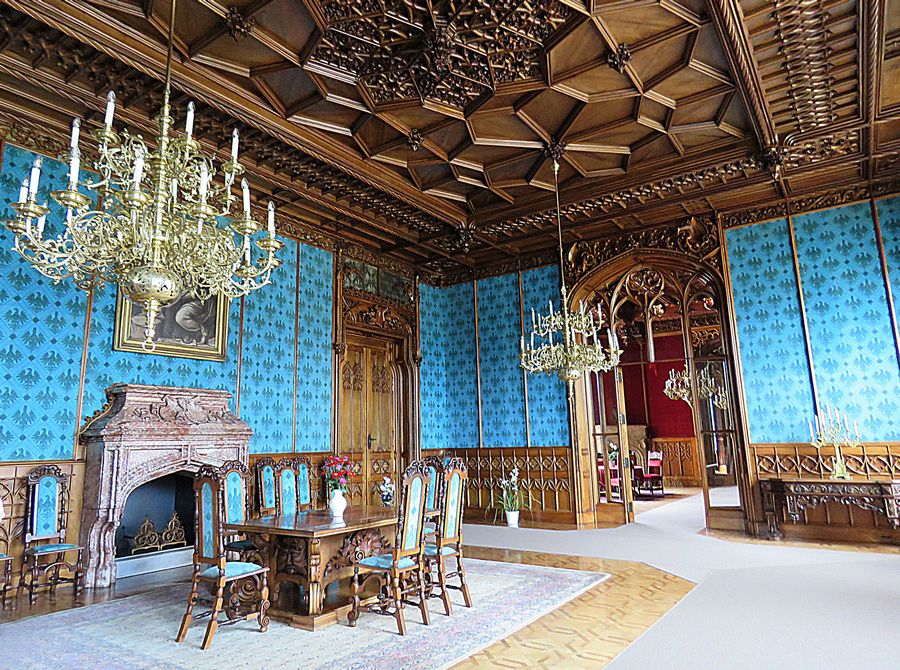
Inside the Castle
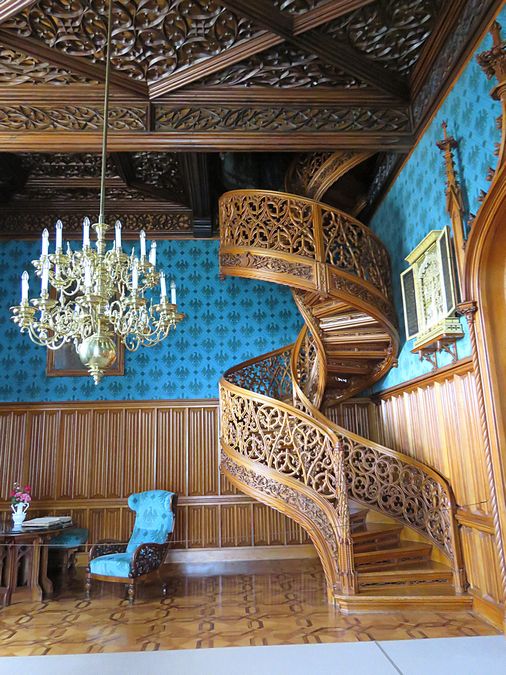
Spiral staircase in Lednice Castle
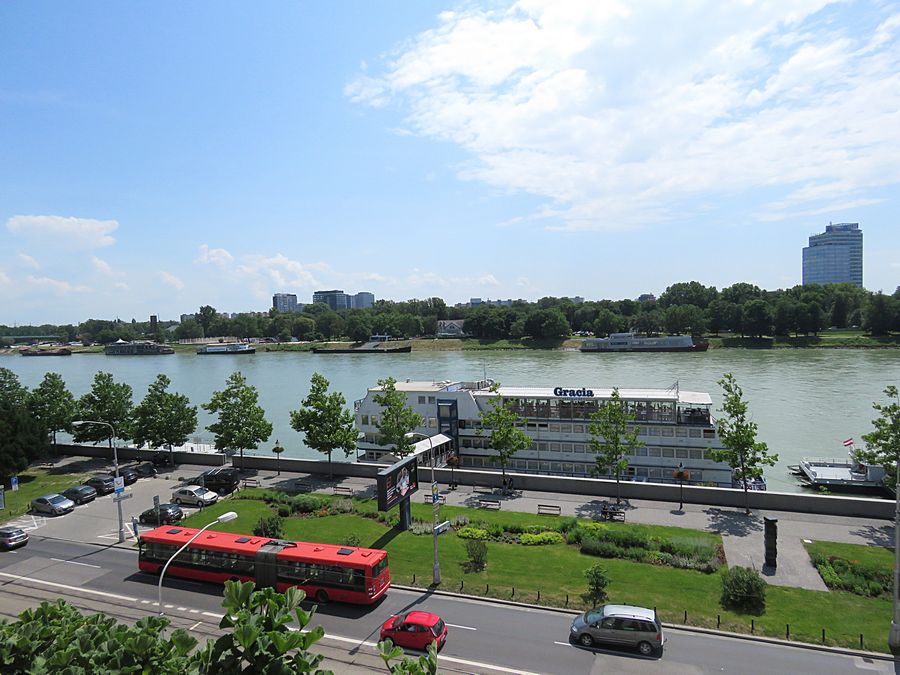
View from my room in Bratislavia, Slovakia of the Danube River
We stayed in the Old
Town area of Bratislava,
which is in Slovakia's southwestern tip, close to Hungary and
Austria. Bratislava has about 450,000 people.
It is the capital city of Slovakia.
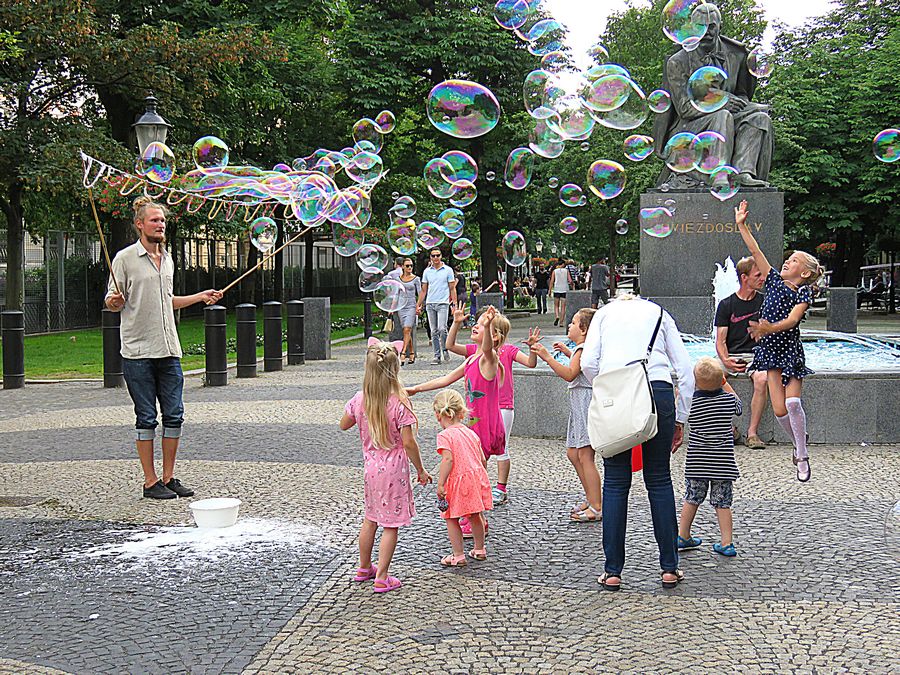
Hviezdoslav Square, one of the best-known squares in Bratislava.
It is located in the Old Town.
Kids everywhere enjoy chasing after bubbles.

One of the kids running after a bubble
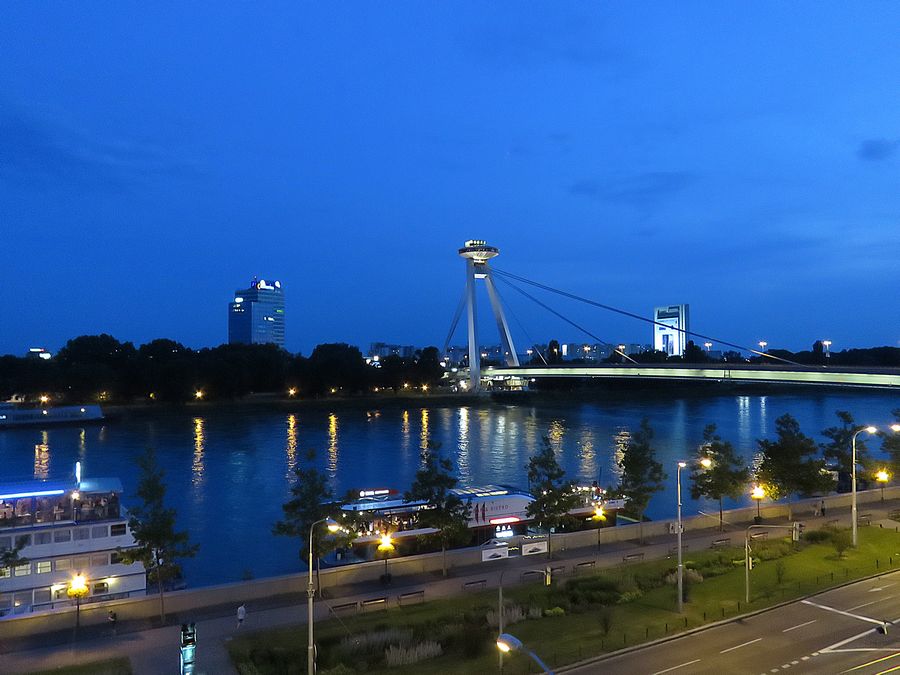
View of UFO Bridge (also called New Bridge) in the evening
from my hotel room.
Built in 1972, the "space ship" on top has a viewing platform.
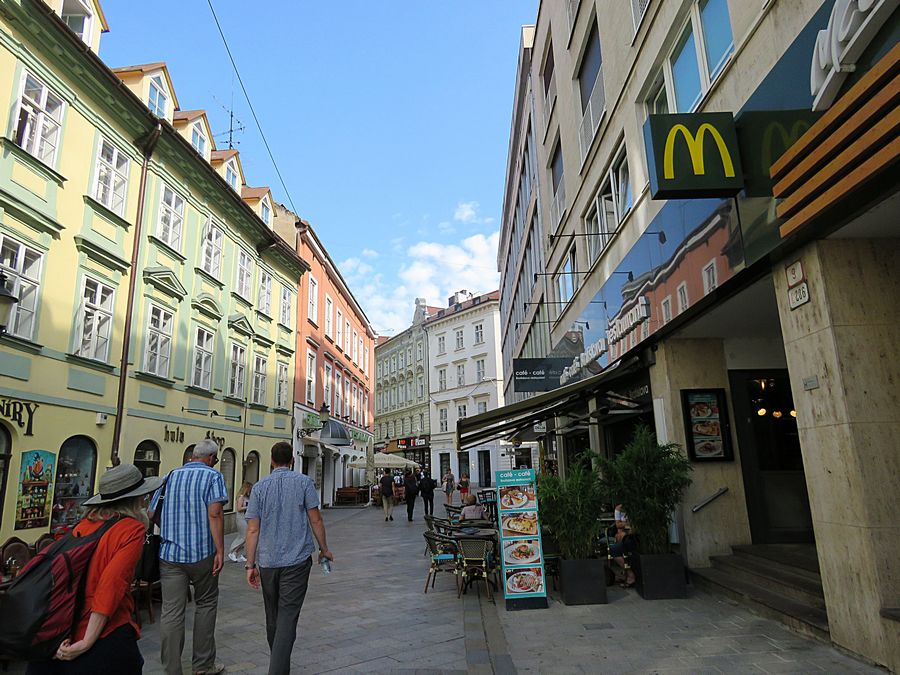
Walking in Old Town Bratislava, yet McDonalds is there.
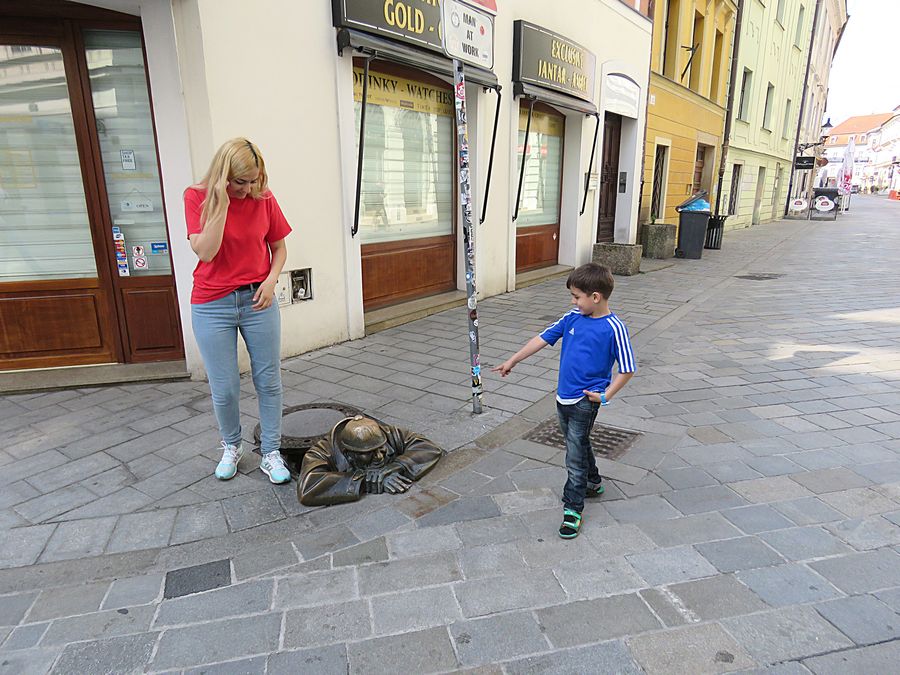
Bratislava's most popular photo op is the Watcher,
who peers out from an imaginary manhole in Old
Town. Originally installed as a joke in 1997,
the statue's popularity allowed him to stay. He's
variously interpreted as an ogler or a lazy Soviet workman.
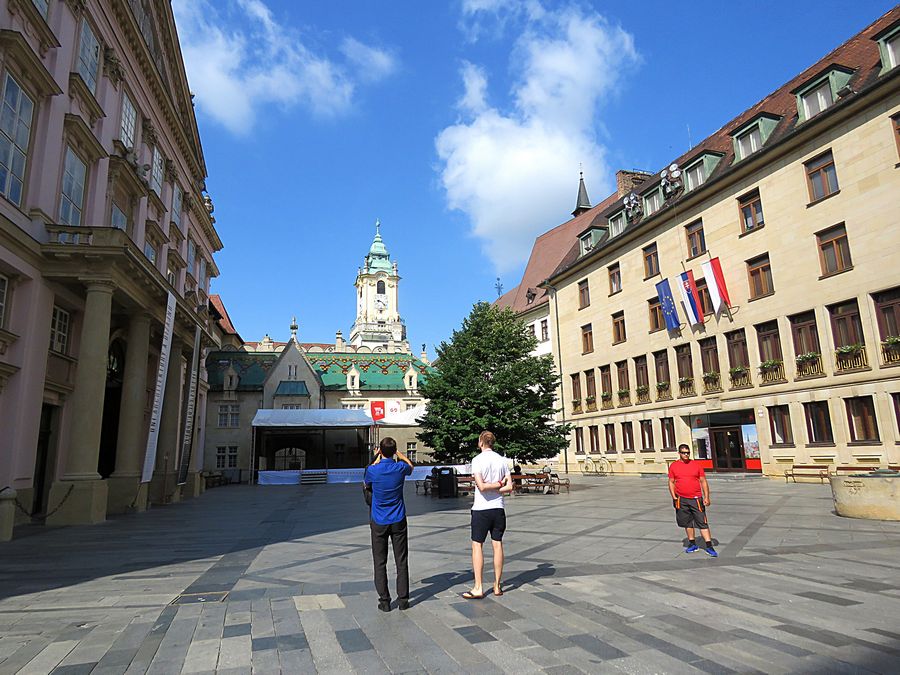
Primate's Palace on the left and the Old Town Hall in the middle
in the background.
The Palace was built 1778-81 for an Archbishop.
It is now the seat of the town's
mayor but is partly open
to the public. The palace and its most famous chamber,
the Hall of Mirrors, were the location of the signing of the fourth
Peace of Pressburg
by Johann I Josef, Prince of Liechtenstein,
Ignacz Gyulay and Charles Maurice de
Talleyrand in
1805 after the Battle of Austerlitz, which effectively ended the
War of
the Third Coalition. As a result of the Peace
of Pressburg, the Holy Roman Empire
was dissolved,
and Emperor Francis II proclaimed himself
Emperor Francis I of Austria.
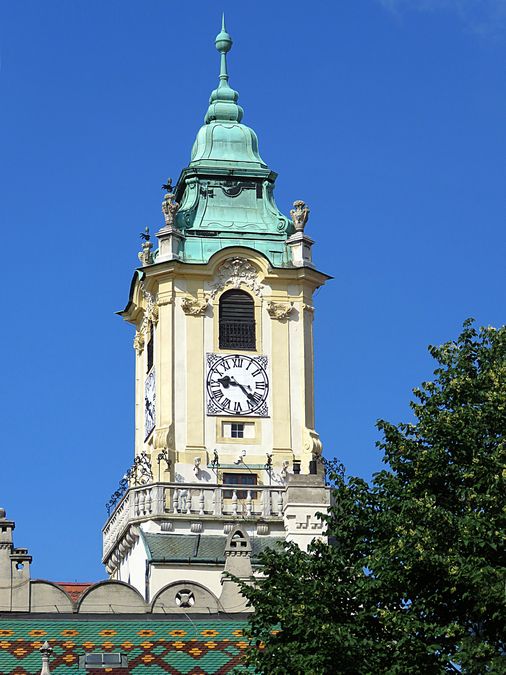
Closeup of the Old Town Hall tower

Hlavne Namestie (Main Square). The center for Bratislava's history,
annual festivals and
cafe culture. Roland Fountain,
at the square's heart, is thought to have been built in 1572
as a public water supply.
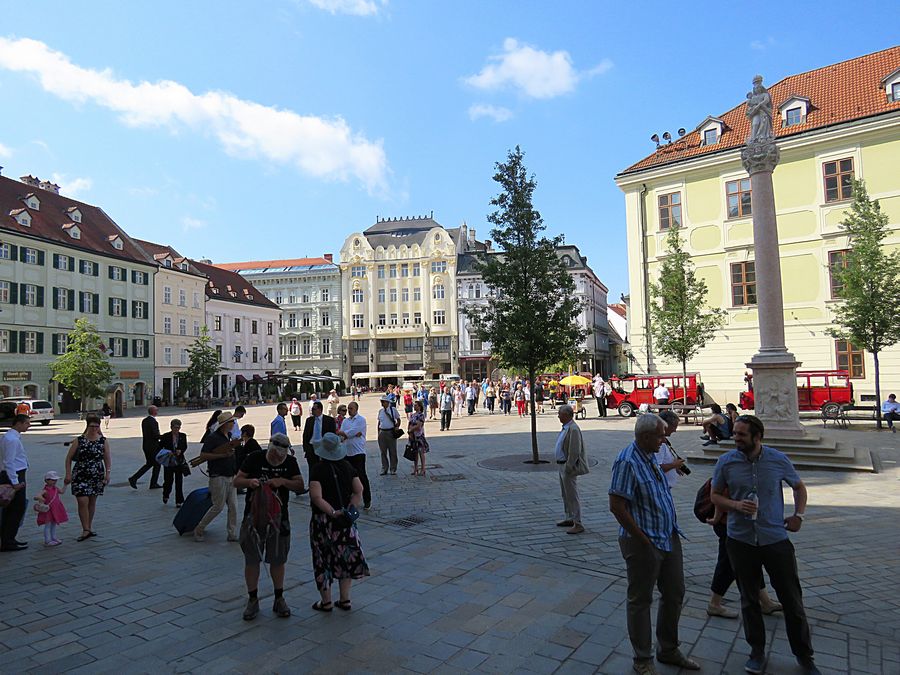
The main square after tourists and
locals start to fill the area.
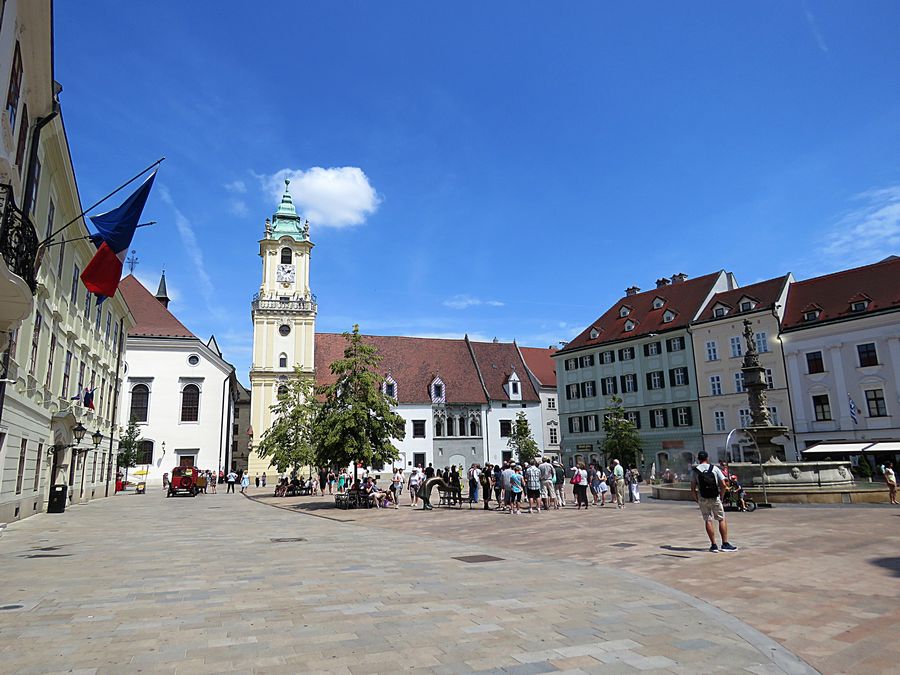
Flanking the northeast side of the square is the 14th-century
Old Town Hall, home
now to the Municipal Museum.
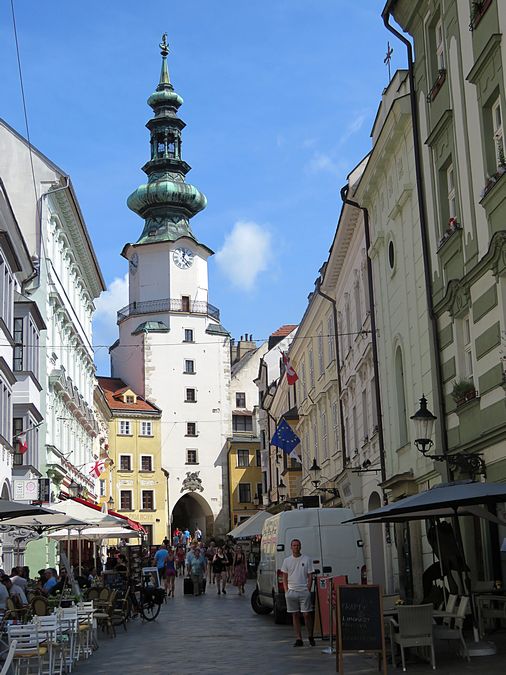
Michael's Gate and Tower in Old Town Bratislava.
Built in the first half of the 14th century. It is the only
surviving original gateway to the medieval city. A statue of
Archangel Michael is at the top. Today it houses the Museum
of Weapons and
Town Fortifications, and its
viewing terrace offers panoramas of the city.
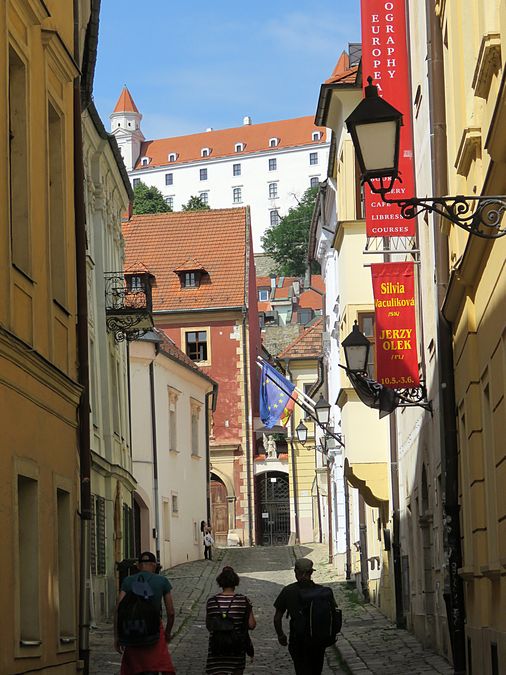
Side street in Old Town; a view of Bratislava Castle above.

St. Martin's Cathedral. It was built on the site of an earlier
14th century
Romanesque church. Between 1563 and 1830,
11 Hungarian kings and 8 queens
were crowned here. The church
was rebuilt in the late 19th century in neo-Gothic
style.

The Holocaust Memorial - located in the center of Bratislava's
Old Town, on the site of the
former Neolog Synagogue,
demolished in 1969 to make way for a highway. The monument
was erected in 1996 to commemorate the 105,000 Holocaust victims
from Slovakia. The
Holocaust Memorial is intended as a place of
public
remembrance, where two layers of
history intertwine:
the memory of the Holocaust itself and the memory of the former
Neolog
Synagogue, a long-time local landmark.
St. Martin's Cathedral is in the background.
Link to Page 6 - Bratislava continued
Pat's Home Page